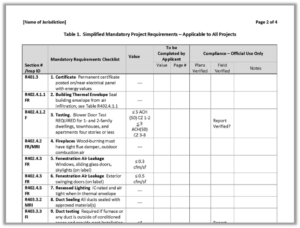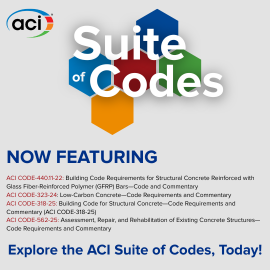
Simplified International Energy Conservation Code residential compliance
Simplified? Many code officials have participated in or been aware of the surveys and compliance studies conducted over the past decade to understand energy code compliance. One thing everyone can agree upon — it’s a complicated issue.
 The Code Council has developed a simplified International Energy Conservation Code (IECC) residential process for authorities having jurisdiction that need a place to start, whether they are refocusing their attention on the energy code or taking a leap from the 2009 edition to the 2018. Beginning with a focused list of provisions provides an opportunity for code officials, builders, sub-contractors and everyone involved to become acquainted with the provisions.
The Code Council has developed a simplified International Energy Conservation Code (IECC) residential process for authorities having jurisdiction that need a place to start, whether they are refocusing their attention on the energy code or taking a leap from the 2009 edition to the 2018. Beginning with a focused list of provisions provides an opportunity for code officials, builders, sub-contractors and everyone involved to become acquainted with the provisions.
This simplified approach is intended to provide the energy efficiency homeowners expect[i] via a manageable list of provisions that are based on items assessed by the U.S. Department of Energy (DOE) to have the greatest direct impact on residential energy consumption[ii]:
- Envelope tightness (ACH at 50 Pa)
- Windows (U-factor & SHGC)
- Wall insulation (assembly U-factor)
- Ceiling insulation (R-value)
- Lighting (% high-efficacy)
- Foundation insulation (assembly U-factor)1
- Duct tightness (CFM per 100 ft2 of conditioned floor area at 25 Pa).
Intake, plan review and inspection forms have been developed for the 2018 IECC and are modifiable by jurisdictions. This four-page handout includes an intake sheet that accommodates all compliance paths, a mandatory requirements checklist (applicable to all compliance paths) and a prescriptive requirements checklist — all limited to DOE’s eight key items. Modeled off of Washington, D.C.’s Energy and Green Code intake forms the applicant not only fills in the appropriate values but they also indicate the plan page number on which that information is shown. This reduces inconsistencies between the plans and documentation and eliminates the need for plan reviewers to search through plans for the information.
 Demonstrating the value of these eight key items and how lack of compliance with these items results in energy savings “left on the table” — results from DOE field studies assessing compliance with these items across seven states illustrated untapped energy savings ranging from $1,220,000 in Kentucky to $4,850,000 in Texas[iii].
Demonstrating the value of these eight key items and how lack of compliance with these items results in energy savings “left on the table” — results from DOE field studies assessing compliance with these items across seven states illustrated untapped energy savings ranging from $1,220,000 in Kentucky to $4,850,000 in Texas[iii].
If you are interested in seeing how these no-cost forms can be used in your jurisdiction, please reach out to Code Council Director of Energy Programs Michelle Britt.
Additionally, training as a 90-minute overview or half-day session, including informative handouts provides an overview of the IECC — from navigation of the code to application and enforcement. Participants also learn from best practices by jurisdictions who have adopted the code and determine those strategies that communities have used to implement the IECC and how they improve code compliance.
[i] C. Ford, How Much Are Buyers Willing to Pay for Energy Efficiency? National Association of Home Builders, April 2019
The Misconception That Buyers “Don’t Care” About Home Performance, EnergyLogic
The Top Energy Efficient Home Trends That Home Buyers Want in 2019, National Association of Realtors, April 2019
[ii] R. Bartlett, M. Halverson, V. Mendon, J. Hathaway, Residential Building Energy Code Field Study Data Collection & Analysis Methodology DOE/EE-1720, Richland WA. May 2018.
[iii] Jeremy Williams, Presentation at the 2019 National Energy Codes Conference, July 2019 https://www.energycodes.gov/sites/default/files/documents/NECC19_D2S1_Williams.pdf






